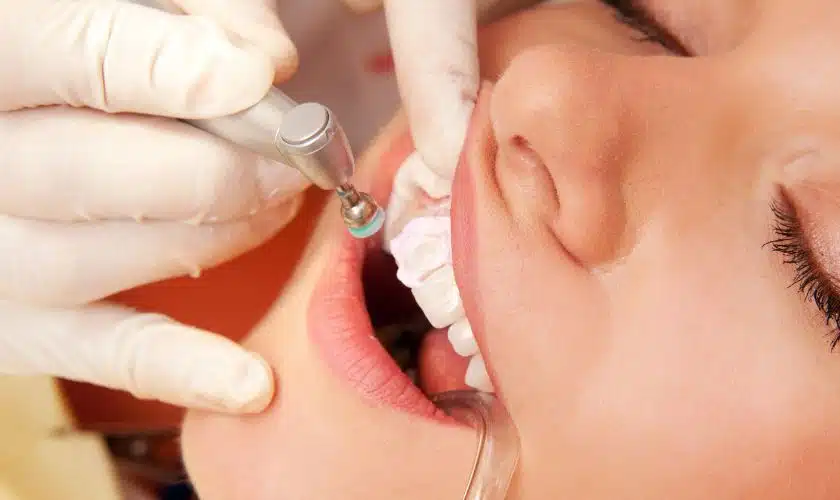
Are you tired of dealing with bleeding gums, bad breath, and tooth loss? If so, it’s time to say goodbye to gum disease! This common oral health problem affects millions of people worldwide and can be caused by a variety of factors. The good news is that there are proactive steps you can take to prevent and treat gum disease. In this blog post, we’ll explore the causes and symptoms of gum disease, as well as provide tips on prevention and treatment options. Say hello to healthy gums and a beautiful smile!
What is Gum Disease?
Gum disease, also known as periodontal disease, is a common condition that affects the tissues surrounding and supporting your teeth. It’s caused by bacteria in plaque buildup on teeth and gums. When left untreated, gum disease can lead to tooth loss and other health problems.
There are two types of gum disease: gingivitis and periodontitis. Gingivitis is the early stage of gum disease where only the gums are affected. Symptoms include redness, swelling, bleeding when brushing or flossing, bad breath and sensitivity. If left untreated at this stage it can progress to periodontitis.
Periodontitis is an advanced form of gum disease where infection has spread from the gums to the bone that supports your teeth. Symptoms include receding gums which make your teeth look longer than usual, loose teeth or gaps between them due to bone loss around them.
It’s important to take good care of your oral hygiene habits such as brushing twice a day for two minutes each time with fluoride toothpaste, flossing daily before bed-time and visiting a dentist regularly for checkups every six months or more frequently if recommended by your dentist based on your level of risk for developing dental diseases like Gum Disease.
Causes of Gum Disease
There are several causes of gum disease, also known as periodontal disease. One major cause is poor oral hygiene habits. When you don’t brush and floss regularly, plaque builds up on your teeth and gums which leads to inflammation and eventually gum disease.
Another common cause of gum disease is smoking or using tobacco products. Smoking weakens the immune system making it harder for your body to fight off infections like gum disease.
Hormonal changes in women can also lead to an increased risk of developing gum disease. During pregnancy or menopause, a woman’s hormone levels fluctuate which can make her more susceptible to gingivitis.
Certain medications can also increase the likelihood of developing gum disease as a side effect. Medications that reduce saliva flow, such as antidepressants or antihistamines, leave the mouth dry and without enough natural cleansing properties to prevent plaque buildup.
Genetics play a role in determining who may be more prone to developing gum disease. If someone has a family history of periodontal problems they should be extra vigilant about their oral health habits.
There are many factors that contribute towards the development of gum diseases so it’s important to maintain good oral hygiene practices along with regular dental checkups in order to prevent this condition from occurring in the first place
Symptoms of Gum Disease
Symptoms of gum disease can vary depending on the stage and severity of the condition. In its early stages, gum disease may not exhibit any noticeable symptoms, making it difficult to detect without professional help.
As the condition progresses, however, some common symptoms include redness and swelling of the gums, bleeding when brushing or flossing, persistent bad breath or a bad taste in your mouth. Some people may also experience loose teeth or changes in their bite as a result of gum recession.
If you notice any of these symptoms, it is important to seek advice from your dentist or periodontist as soon as possible. Early detection and treatment are crucial for preventing further damage to your oral health.
It’s also worth noting that certain lifestyle factors such as smoking and poor diet can increase your risk of developing gum disease. Therefore, taking steps towards maintaining good oral hygiene habits and a healthy lifestyle can greatly reduce your chances of experiencing gum disease.
How to Prevent Gum Disease
Preventing gum disease is crucial to maintain good oral health. Here are some tips to help keep your gums healthy.
1. Brush and floss regularly: Make it a habit to brush twice a day for at least two minutes, using fluoride toothpaste, and floss at least once daily.
2. Use mouthwash: Mouthwash helps kill bacteria in the mouth that may cause gum disease. Look for one with anti-bacterial properties.
3. Eat healthy foods: A balanced diet rich in Vitamin C and antioxidants can help boost the immune system and prevent gum disease.
4. Quit smoking: Smoking is a significant risk factor for gum disease as it weakens the immune system and damages tissues in the mouth.
5. Regular dental check-ups: Visit your dentist every six months or more frequently if you have existing dental problems or medical conditions that increase your risk of developing gum disease
By following these simple steps, you can reduce your chances of developing this painful condition while keeping your teeth looking their best!
Treatment Options for Gum Disease
When it comes to treating gum disease, there are a variety of options available depending on the severity and stage of the disease. In the early stages, non-surgical treatments such as scaling and root planing may be effective in removing plaque and tartar buildup from below the gumline.
For more advanced cases, surgical intervention may be necessary. Gum surgery can involve techniques like pocket reduction or tissue regeneration to restore damaged gums and bone structure. Another option is dental implants which replace missing teeth caused by severe periodontitis.
In addition to traditional treatments, newer technologies like laser therapy have emerged as a promising alternative for treating gum disease. This treatment uses concentrated light energy to remove infected tissues without damaging healthy ones.
However, prevention remains the best course of action when it comes to gum disease. Regular brushing, flossing, and professional cleanings can help prevent gingivitis from progressing into periodontitis – reducing your need for more invasive treatments down the road.
Conclusion
Gum disease is a serious oral health issue that affects many people worldwide. The good news is that it can be prevented and treated with proactive measures such as regular brushing and flossing, healthy diet choices, and routine dental checkups. By being aware of the causes and symptoms of gum disease, you can take steps to protect your teeth and gums from damage.
If you suspect that you may have gum disease or are experiencing any symptoms such as bleeding gums or bad breath, it’s essential to seek treatment from a dental professional promptly. With proper care and attention, you can say goodbye to gum disease for good!
Recent Posts

Braces or Invisalign: Which Option is Best for You? Exploring Orthodontic Treatments in Gainesville

Common Dental Concerns in Different Age Groups: How a Family Dentist Addresses Them All

How Adult Braces Can Improve Oral Health in Gainesville

Debunking Myths About Oral Cancer: Separating Fact from Fiction

Why Orthodontic Treatment is Essential for Dental Health
Categories
- Adult Braces (1)
- Cosmetic Dentistry (15)
- Dental Care (37)
- Dental Filling (1)
- Dental Health (14)
- Dental Hygiene (7)
- Dental Implant (3)
- Dentures (5)
- Emergency Dentistry (9)
- Family Dentistry (17)
- General Dentistry (21)
- Invisalign (2)
- Laser Teeth Whitening (1)
- Oral Cancer (1)
- Oral Health (25)
- Orthodontics (22)
- Pediatric Dentistry (10)
- Periodontal Treatment (4)
- Restorative Dentistry (5)
- Root Canal Trearment (1)
- Teeth Whitening (5)
- Uncategorized (1)
- Veneers & Lumineers (4)

